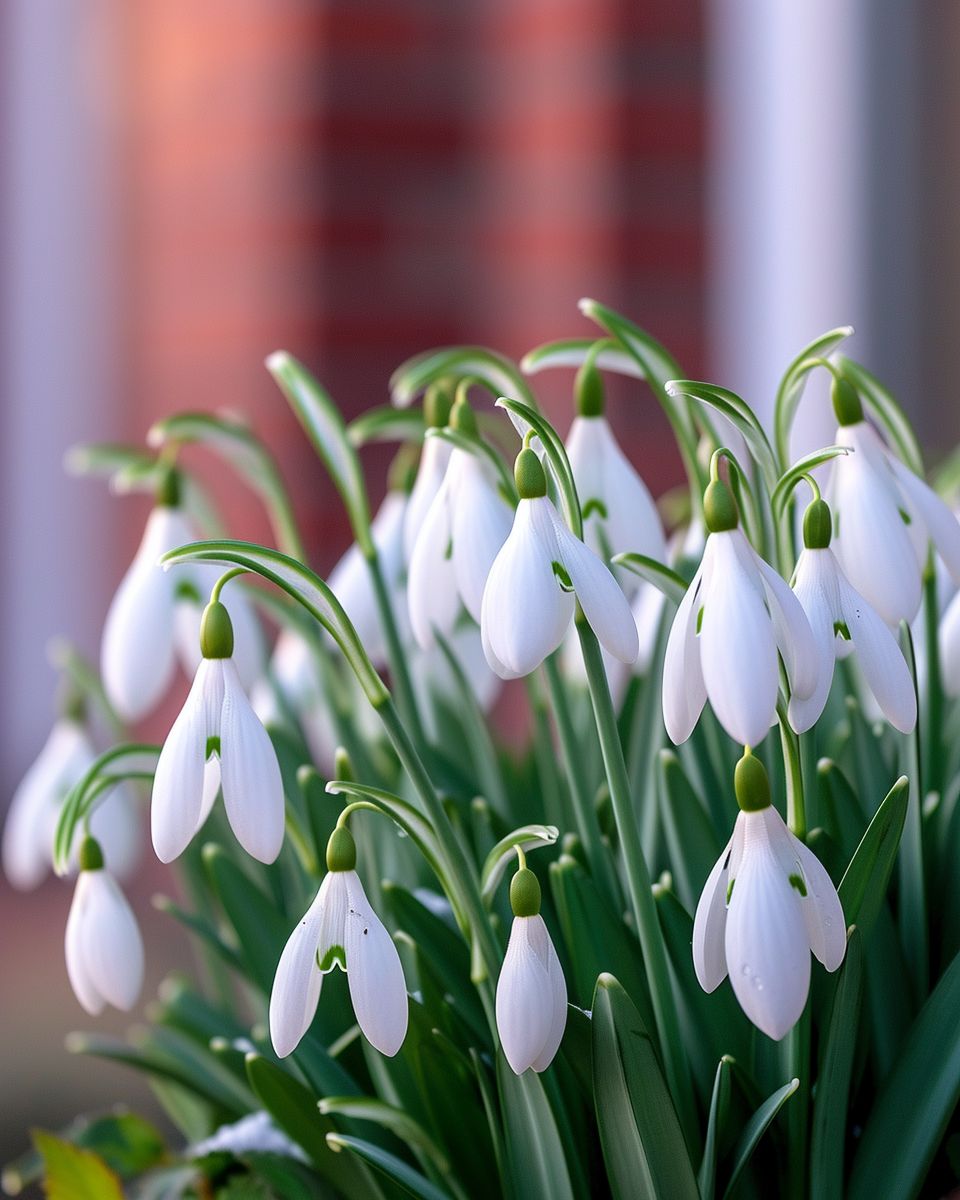
Snowdrops (Galanthus), with their delicate white blooms, are one of the first flowers to herald the end of winter, often pushing through the frosty ground as early as January or February.
These hardy perennials are a favorite for many gardeners looking to add a splash of early spring color to their home gardens.
Growing snowdrops isn’t difficult, but they do have certain requirements to thrive and grace your garden year after year. If you’re looking to cultivate these ephemeral beauties in your home, there are a few important steps to follow for both planting and ongoing care.
Choosing the Right Bulbs and Planting Time
1. Opt for high-quality, firm bulbs without any signs of disease or damage. It’s best to purchase your bulbs from a reputable nursery or garden center.
2. Purchase and plant your snowdrop bulbs in late summer to early autumn. This is when the bulbs are dormant but ready to root and establish themselves.
3. Snowdrops prefer a cool to temperate climate and may not perform well in regions with hot, dry summers. They thrive best in USDA Hardiness Zones 3 through 7.
Deciding on the Planting Site
1. Select a location that receives dappled sunlight. Snowdrops can thrive in partial shade, especially beneath deciduous trees where they receive early spring sun before the trees leaf out.
2. Ensure the soil is well-draining and rich in organic matter. Amend poor soil with compost or well-rotted manure before planting.
3. Plant your snowdrop bulbs in naturalistic drifts or groupings for a striking display. This mimics their growth in the wild and adds to their charm.

Planting Snowdrop Bulbs:
Plant snowdrop bulbs in containers with well-draining potting soil in the fall, before the first frost. Place bulbs pointy side up, with the tips just below the soil surface. Space bulbs evenly in the container, leaving room for growth and expansion. Water thoroughly after planting to settle the soil and encourage root establishment.
Plant snowdrop bulbs 3 inches deep and about 3 inches apart. A good rule of thumb is to plant bulbs at a depth three times their height.
2. Place the bulbs with the pointy end facing upwards. They have a slightly flattened base and a pointed tip where the leaves will emerge.
3. Water the planting site thoroughly after planting to help settle the soil and provide moisture for root development.
Provide Adequate Light:
Snowdrops prefer bright, indirect light, making them ideal for windowsills or well-lit areas indoors. Place your snowdrop container in a location with filtered sunlight or dappled shade to prevent scorching of the delicate foliage. Rotate the container periodically to ensure even growth and balanced exposure to light.
Maintain Moisture Levels:
Keep the soil consistently moist but not waterlogged throughout the growing season. Water your snowdrops whenever the top inch of soil feels dry to the touch, ensuring thorough saturation without water pooling in the container. Avoid overwatering, which can lead to root rot and other issues.

Fertilize Sparingly:
Snowdrops are light feeders and require minimal fertilization to thrive. Apply a balanced, water-soluble fertilizer diluted to half strength once or twice during the growing season, following package instructions. Avoid excessive fertilization, which can lead to lush foliage at the expense of flower production.
Monitor for Pests and Diseases:
Keep an eye out for common pests like aphids, mealybugs, and spider mites that can infest snowdrops indoors. Inspect the leaves and stems regularly for signs of pests or disease, such as yellowing or wilting foliage. Treat affected plants with insecticidal soap or neem oil as needed, following label directions.
1. Snowdrops are largely resistant to pests and diseases, but keep an eye out for signs of trouble, such as gray mold or bulb rot.
2. Practice good hygiene by removing any diseased plant material and avoiding overwetting. This reduces the risk of disease spreading.
3. Use environmentally friendly pest control measures if pests are detected, to maintain the health of your garden ecosystem.
Growing and caring for snowdrops indoors offers a delightful opportunity to nurture nature’s beauty and grace within their homes. By following these tips and guidelines, you can cultivate healthy and vibrant snowdrops that bring joy and serenity to your indoor spaces year-round.
With proper bulb selection, planting, light exposure, moisture management, minimal fertilization, and vigilant pest control, you can successfully grow and care for snowdrops indoors and enjoy their exquisite blooms and fragrance throughout the seasons. Embrace the tranquility and elegance of snowdrops and let them brighten your home with their timeless charm.
Here’s to the simple beauty and enduring grace of snowdrops, and the joy they bring to our indoor gardens!
Happy growing!

